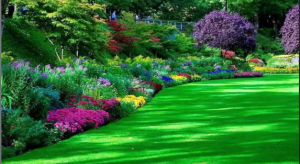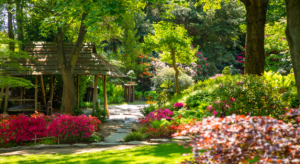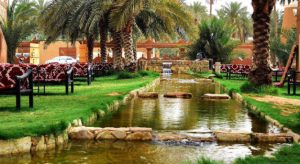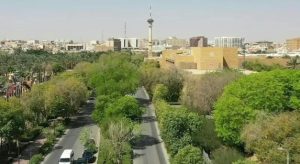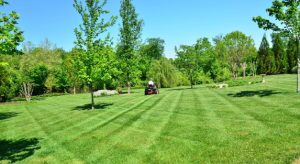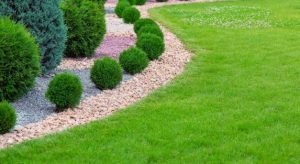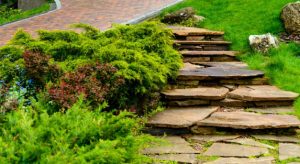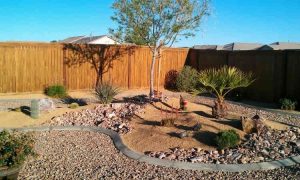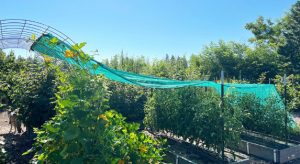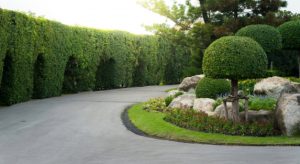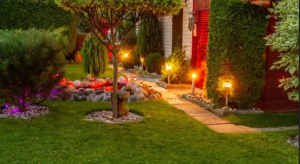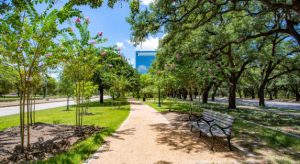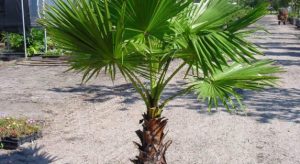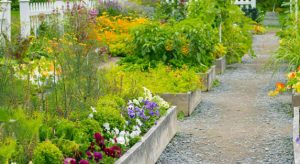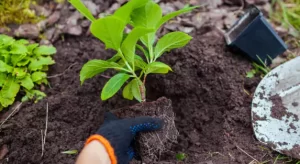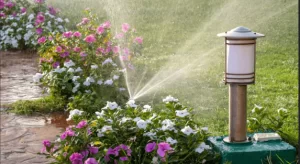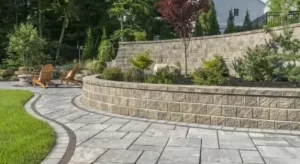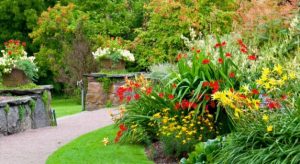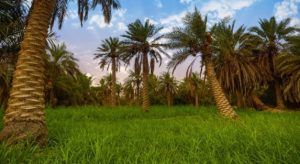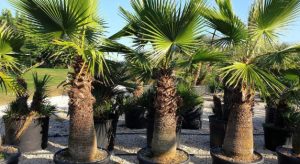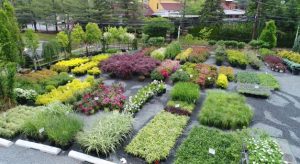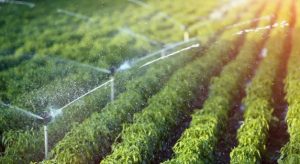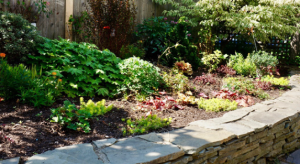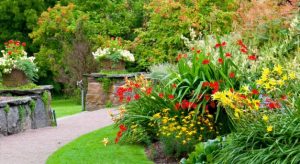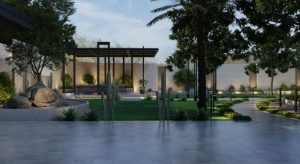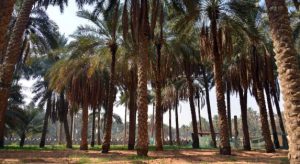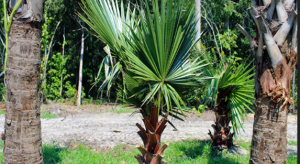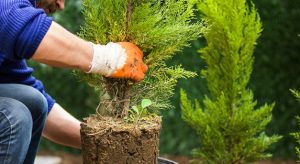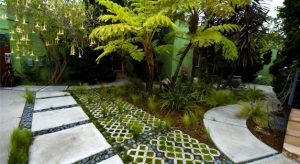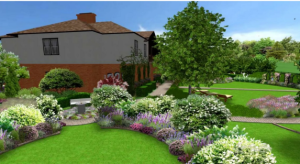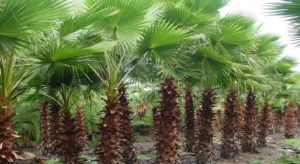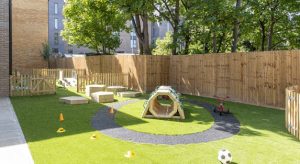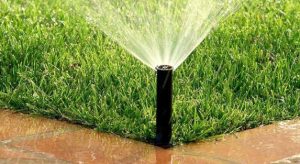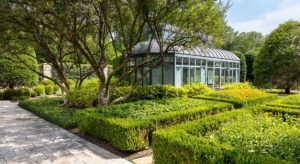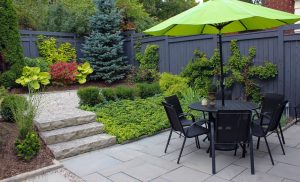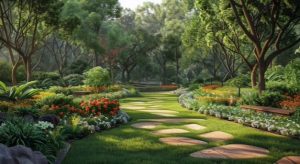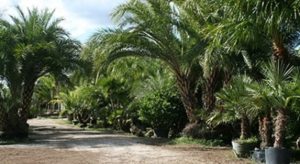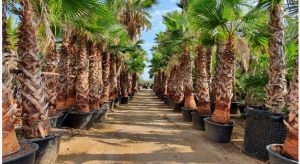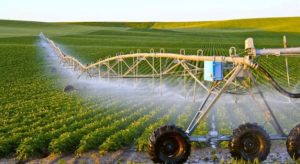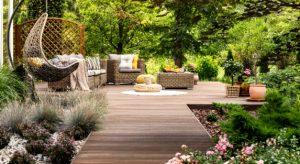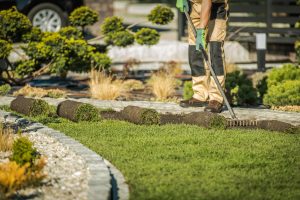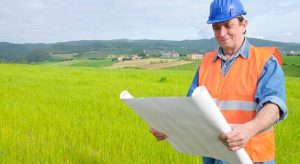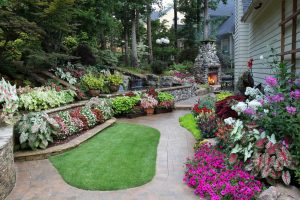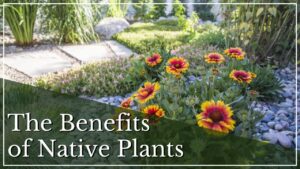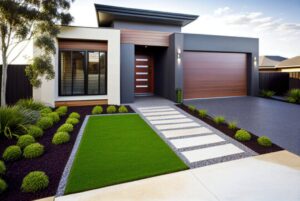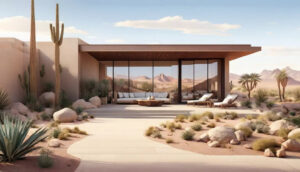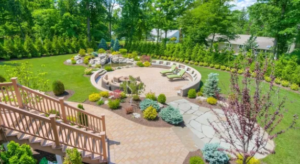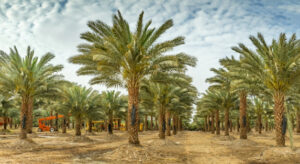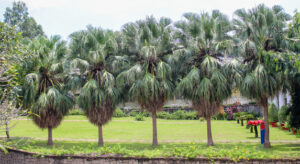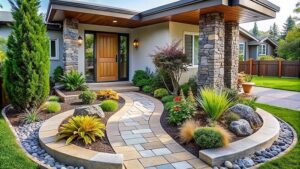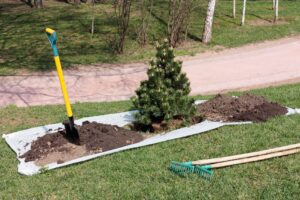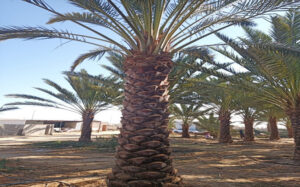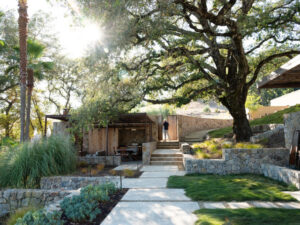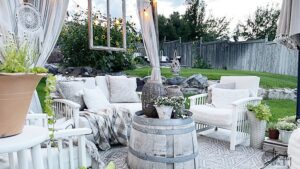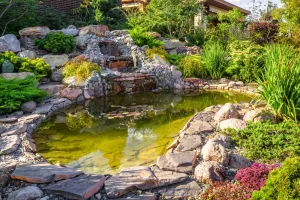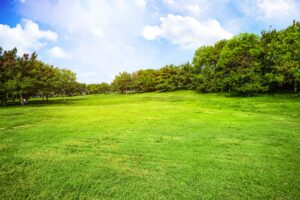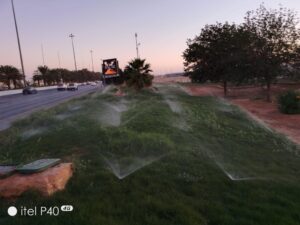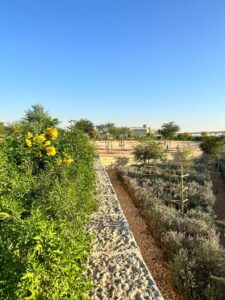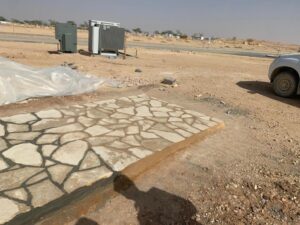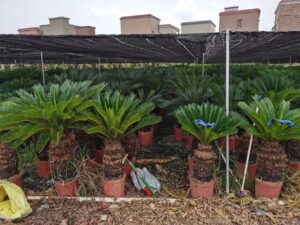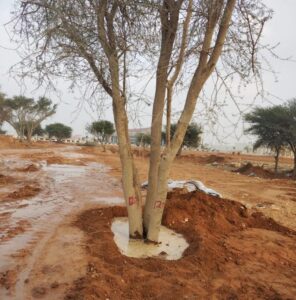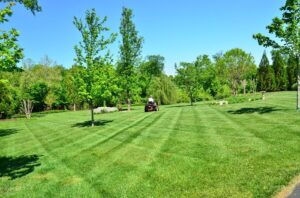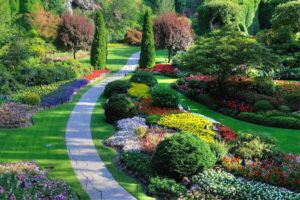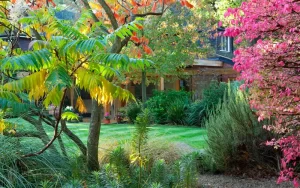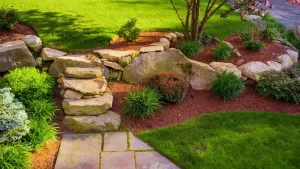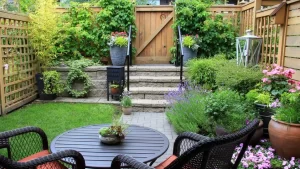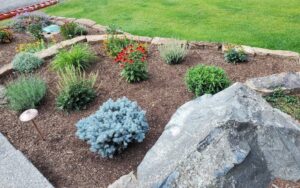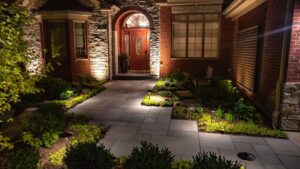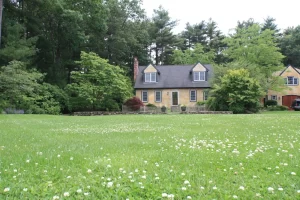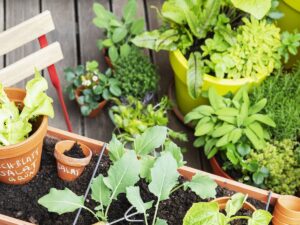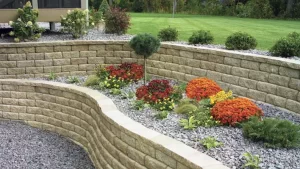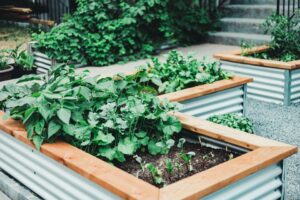Hardscape Landscaping Trends in Saudi Arabia for 2025
4 April, 2025
1. Introduction
Hardscape landscaping in Saudi Arabia has undergone remarkable transformation over recent years, reflecting the Kingdom’s rapid urbanization and evolving aesthetic preferences. As cities expand and modernize in alignment with Vision 2030, there is a growing emphasis on creating functional, visually appealing, and sustainable outdoor spaces. This shift is driving demand for hardscape solutions that blend tradition with innovation.
In 2025, the hardscape landscaping industry in Saudi Arabia is set to adopt cutting-edge materials, smart technologies, and environmentally conscious designs. From advanced paving solutions and permeable surfaces to solar-powered lighting and automated irrigation systems, the integration of technology is redefining outdoor environments. At the same time, there’s a conscious effort to preserve the region’s cultural identity through the use of native materials and design elements that echo traditional Arab architecture.
Moreover, sustainability remains at the forefront, with a focus on water conservation, heat-resistant materials, and low-maintenance installations. Developers, municipalities, and homeowners alike are seeking hardscape features that offer long-term durability and eco-friendly appeal.
This article explores the key trends, innovative materials, and challenges shaping hardscape landscaping in Saudi Arabia, providing insights into how the sector is evolving to meet both modern demands and environmental goals.
2. Understanding Hardscape Landscaping
Definition and Importance of Hardscape Landscaping in Saudi Arabia
Hardscape landscaping encompasses the non-living elements within an outdoor environment—such as walkways, patios, retaining walls, driveways, stone pathways, decks, pergolas, and other built structures. These elements form the backbone of outdoor design, offering both functionality and visual appeal. Unlike softscape elements like grass, plants, and flowers, hardscape features are more permanent and require less maintenance, making them especially suitable for regions with extreme weather conditions.
In the context of Saudi Arabia, hardscape landscaping holds significant importance due to the country’s unique environmental and urban development factors. The Kingdom's harsh climate—with its high temperatures, arid conditions, and minimal rainfall—poses challenges for traditional greenery. As a result, hardscaping has become a preferred solution, using durable and heat-resistant materials that can withstand extreme weather while maintaining their appearance over time.
Another critical factor is water conservation. With limited freshwater resources, reducing the need for irrigation is a national priority. Replacing water-intensive lawns and gardens with hardscape features helps conserve water while still offering aesthetic value and usability.
Additionally, rapid urbanization across cities like Riyadh, Jeddah, and Dammam has driven the demand for functional and visually engaging outdoor areas. Well-planned hardscape designs contribute to organized, modern environments that enhance the quality of life in both public and private spaces.
In summary, hardscape landscaping is not only a practical necessity in Saudi Arabia but also a crucial design element that supports sustainability, durability, and urban development.
3. Factors Influencing Hardscape Landscaping in Saudi Arabia
Hardscape landscaping in Saudi Arabia is uniquely shaped by three major factors: climate and environmental conditions, cultural and aesthetic preferences, and rapid urbanization driven by ambitious development projects. Together, these elements are transforming outdoor spaces across the Kingdom into sustainable, functional, and visually appealing environments.
1. Climate and Environmental Conditions
Saudi Arabia’s harsh desert climate presents significant challenges for landscape design. With extreme temperatures, intense sunlight, and minimal rainfall, traditional green landscaping requires significant water and maintenance. As a result, hardscape elements are increasingly favored for their durability and low-maintenance nature.
To withstand the extreme heat, materials like natural stone, porcelain tiles, and concrete pavers are widely used. These materials not only resist heat damage but also retain their appearance over time. Designers also incorporate shade structures—such as pergolas, gazebos, and modern canopies—to provide relief from direct sunlight and make outdoor spaces more usable during hot days.
Permeable paving is gaining popularity as well. These surfaces reduce heat buildup and promote better water drainage, contributing to both comfort and sustainability. Collectively, these choices reflect a growing emphasis on designing hardscapes that are climate-resilient and resource-efficient.
2. Cultural and Aesthetic Preferences
Saudi Arabia’s rich cultural heritage plays a vital role in shaping the visual character of its hardscapes. Traditional Islamic and Arabic design elements are deeply embedded in landscaping aesthetics. This is especially evident in the use of geometric patterns, mosaic tilework, and intricate paver designs that echo Islamic art.
Courtyard-style setups, often featuring a central gathering space or majlis, are another hallmark of culturally influenced hardscaping. These areas serve as social hubs, blending comfort and tradition in a modern outdoor setting. Hardscape elements are often finished in neutral and earthy tones such as sand, beige, and terracotta, harmonizing with the natural desert landscape while maintaining cultural authenticity.
3. Urbanization and Modern Architecture
As Saudi Arabia undergoes rapid urban expansion, particularly through mega-projects like NEOM, the Red Sea Project, and Qiddiya, hardscape landscaping is being reimagined to align with futuristic, sustainable cityscapes. These initiatives aim to showcase world-class infrastructure and design, setting new standards for urban development.
In this context, hardscape trends are evolving to include futuristic architectural elements and sleek, modern materials. Smart lighting systems, which use energy-efficient LEDs and can be controlled via mobile apps or sensors, are being integrated into walkways and plazas. Furthermore, the use of AI and IoT (Internet of Things) is expanding in outdoor environments—enabling automated watering systems, climate-responsive shading, and real-time monitoring of outdoor conditions.
In dense urban environments, rooftop gardens and vertical hardscaping are also gaining traction. These approaches not only maximize limited space but also contribute to the overall greening of cities, reducing urban heat and enhancing visual appeal.
4. Emerging Hardscape Landscaping Trends in Saudi Arabia for 2025
As Saudi Arabia marches forward with its Vision 2030 goals, the landscape industry—particularly hardscaping—is experiencing an exciting transformation. From eco-conscious materials to high-tech integrations, hardscape design is no longer just about functionality—it’s about creating smart, sustainable, and culturally relevant outdoor environments. Here's a closer look at the top 10 hardscaping trends shaping the Saudi landscaping scene in 2025 and beyond.
1. Sustainable and Eco-Friendly Materials
With the global focus on sustainability gaining momentum, hardscape designers in Saudi Arabia are increasingly opting for environmentally responsible materials. Recycled composite decking, for example, made from post-consumer plastics and wood fibers, is being used extensively in decks, walkways, and patios. These materials not only reduce landfill waste but also require less maintenance and are weather-resistant—ideal for Saudi’s harsh climate.
Low-carbon concrete alternatives are also entering the market. By incorporating industrial byproducts like fly ash or slag into concrete mixtures, builders are cutting down the carbon footprint of construction without compromising strength or durability.
Another innovative trend is the use of solar-reflective pavers. These pavers reduce urban heat island effects by reflecting sunlight rather than absorbing it, which helps maintain cooler surface temperatures in urban hardscaped zones.
2. Smart Hardscaping with Technology Integration
As cities become smarter, so do their landscapes. Technology is now deeply embedded into outdoor design, allowing for a more intuitive and energy-efficient experience. Motion-sensor LED pathway lighting, for instance, lights up only when movement is detected, conserving power while providing security and aesthetic appeal.
Adjacent softscape areas can now be maintained via automated irrigation systems that work in sync with weather forecasts and soil sensors. This ensures optimal water usage—a key factor in a region where water conservation is critical.
Furthermore, smart outdoor furniture is becoming a staple in public and private spaces. Benches and tables equipped with USB charging ports, solar panels, and wireless charging stations allow residents and visitors to stay connected while enjoying the outdoors.
3. Minimalist and Modern Designs
The shift towards minimalism is evident in many upscale urban developments across Saudi Arabia. Modern hardscapes are characterized by clean lines, open spaces, and monochromatic color schemes that evoke a sense of calm and order.
Large-format porcelain tiles are increasingly used for patios and terraces, creating a sleek and expansive look while also being easy to maintain and heat-resistant. Floating decks and steps—where structures appear to “hover” slightly above the ground—add a contemporary edge to landscapes, offering a sense of lightness and innovation.
4. Traditional Arabic Influences with a Contemporary Twist
While modern design is on the rise, there's still a deep-rooted appreciation for the Kingdom’s cultural identity. Today’s hardscape architects are blending tradition with modernity. One example is the incorporation of Mashrabiya-inspired laser-cut metal screens. These intricately designed screens provide both aesthetics and functionality, offering shade, privacy, and ventilation.
Zellij tile patterns, known for their geometric complexity, are being adapted into modern courtyards, fusing heritage with a modern material palette. Similarly, water features that echo traditional Islamic garden fountains—with gentle bubbling or trickling sounds—bring a soothing ambience while keeping spaces cool.
5. Water-Efficient Hardscape Solutions
Given the arid conditions across Saudi Arabia, water efficiency is not just desirable—it’s essential. Designers are now utilizing techniques that reduce or eliminate the need for regular irrigation. One popular approach is the use of wadi-inspired dry riverbeds—decorative stone channels that mimic natural river formations. These are both functional and visually striking.
Permeable pavers are another sustainable innovation. These pavers allow rainwater to seep through and recharge underground aquifers rather than running off into drains. When combined with artificial turf, which mimics real grass without requiring water, these hardscape solutions are ideal for creating green-like aesthetics with minimal environmental impact.
6. Multi-Functional Outdoor Spaces
Saudi homeowners and public space developers are now prioritizing flexibility in landscape design. Convertible hardscape areas are gaining traction—spaces that can seamlessly transition from a casual lounge setup during the day to a dining area at night.
Innovative features such as built-in seating with hidden storage add practicality to patios and rooftops, allowing for neat, organized spaces. Modular hardscape systems, like interlocking benches, planters, and tables, offer adaptability and ease of maintenance, which is especially useful for dynamic public areas and family-focused residences.
7. Use of Local and Natural Stone
There’s a renewed interest in utilizing locally sourced materials to support regional economies and maintain design authenticity. Saudi granite and limestone are being widely used for walkways, walls, and outdoor kitchens, offering a robust and elegant look that reflects the Kingdom’s natural geology.
Sandstone continues to be a favorite for rustic pathways and garden borders due to its earthy tones and natural textures. Meanwhile, slate, known for its modern and slip-resistant properties, is used in high-traffic zones such as patios and pool decks.
8. Lighting Innovations in Hardscape Design
Lighting has evolved from a safety feature to an artistic tool. Fiber-optic lit pathways are now being incorporated into driveways and plazas, creating starry-night effects or glowing lines that guide the eye and foot.
Solar-powered bollard lights are both cost-effective and environmentally friendly, harnessing the abundant Saudi sunlight to illuminate pathways without the need for electrical wiring. Decorative aggregates embedded with glow-in-the-dark particles are also being used for driveways and garden accents, offering subtle illumination and an ethereal ambiance after sunset.
9. Vertical Hardscaping and Green Walls
In urban environments where space is limited, the focus is shifting upward. Vertical hardscaping elements like stone-clad retaining walls not only provide structural support but also act as decorative backdrops for seating or dining areas. Integrating planters into these walls adds a touch of greenery and improves air quality.
Living walls, or green walls, are becoming a common sight in luxury villas, corporate campuses, and public plazas. Equipped with automated irrigation and drainage systems, these vertical gardens bring nature into hardscaped spaces without requiring expansive horizontal ground area. Trellis systems for climbing plants further add charm and cooling shade to hard facades and pergolas.
10. Interactive and Dynamic Hardscape Features
In a world where interactivity and engagement are valued, hardscape design is going beyond aesthetics. Kinetic paving systems, which generate energy when stepped on, are being trialed in public areas, powering streetlights or digital displays through foot traffic.
Interactive water walls with touch sensors allow users to alter water flow or patterns—offering an engaging experience in malls, parks, and resorts. In tourist hotspots and futuristic developments, Augmented Reality (AR) is being integrated into hardscape features, providing immersive educational or entertainment content through smartphone apps or wearable tech.
5. Challenges and Solutions in Hardscape Landscaping in Saudi Arabia
Hardscape landscaping in Saudi Arabia presents a unique set of challenges, primarily due to the country’s harsh environmental conditions. From extreme heat and limited water resources to the need for long-lasting, low-maintenance infrastructure, landscape architects and developers must adopt innovative strategies and durable materials to ensure successful project outcomes. Let’s explore some of the most pressing challenges and practical solutions shaping hardscape design across the Kingdom.
1. Extreme Heat and Durability Concerns
One of the most significant hurdles in Saudi Arabian hardscape design is coping with prolonged periods of intense heat. During summer months, temperatures often soar above 45°C (113°F), which can cause rapid material degradation, surface discoloration, and discomfort for users walking on exposed pathways or patios. Traditional paving materials, such as asphalt or untreated concrete, tend to absorb and retain heat, exacerbating the urban heat island effect.
Solution: To counteract this, landscape professionals are increasingly turning to heat-reflective coatings and UV-resistant sealants. These coatings minimize heat absorption, keeping surfaces cooler and more comfortable underfoot. UV-resistant sealants protect surfaces from sun damage, preventing cracks, fading, and brittleness. In addition, incorporating shaded structures like pergolas, canopies, and shade sails can significantly reduce surface heat exposure, creating more usable and pleasant outdoor environments.
2. Water Scarcity and Conservation
Saudi Arabia faces chronic water scarcity due to its arid climate and limited natural freshwater resources. This makes traditional landscaping practices involving expansive lawns or thirsty plant species unsustainable. In hardscape-focused designs, there’s an opportunity to create beautiful, functional outdoor areas while minimizing water usage.
Solution: The strategic approach to this challenge lies in adopting xeriscaping, a landscaping method designed for water efficiency. By emphasizing hardscape elements—such as stone pathways, decorative gravel beds, and built-in seating—over water-demanding softscape features, xeriscaping reduces the need for irrigation. Where greenery is desired, native drought-tolerant plants, artificial turf, or container gardens can complement the design without placing undue strain on water resources. Additionally, the use of permeable pavers allows natural rainwater to seep into the ground, supporting local aquifers and reducing runoff.
3. Maintenance and Longevity
In a region where sandstorms, heat, and heavy use can rapidly deteriorate outdoor spaces, selecting materials that withstand environmental stress is essential. High maintenance demands not only drive up costs but also reduce the long-term viability of outdoor developments.
Solution: A key strategy is the use of high-quality, weather-resistant materials that can endure Saudi Arabia’s climate. Options like natural stone (granite, limestone, sandstone), composite decking, and treated concrete pavers offer durability, low maintenance, and resistance to environmental wear and tear. Investing in premium-grade materials may carry a higher upfront cost but yields long-term savings in reduced maintenance, repairs, and replacements. Proper installation techniques, including drainage planning and surface sealing, also play a crucial role in prolonging the lifespan of hardscaped elements.
6. Future Outlook: The Evolution of Hardscape Landscaping in Saudi Arabia
As Saudi Arabia advances towards its Vision 2030 goals, the future of hardscape landscaping is set to undergo a transformative evolution by 2026. With rapid urban development and a national push for innovation and sustainability, outdoor spaces across the Kingdom will become more intelligent, eco-conscious, and culturally enriched.
One of the most notable shifts will be the integration of artificial intelligence (AI) in landscape design. From smart lighting systems and automated irrigation to motion-sensor pathways and interactive outdoor features, AI will enhance the functionality, safety, and user experience of hardscaped environments.
Sustainability will also take center stage. Developers and designers will increasingly rely on recycled and locally sourced materials, permeable paving, and solar-powered installations to reduce environmental impact and conserve water and energy. Hardscape elements will be planned with long-term durability, low maintenance, and minimal resource consumption in mind.
At the same time, there will be a deeper appreciation for cultural identity. Expect to see a harmonious blend of traditional Arabic motifs—like geometric patterns, mashrabiya screens, and courtyard layouts—with modern architectural trends. This fusion will not only celebrate the Kingdom’s heritage but also position Saudi Arabia as a global leader in innovative and sustainable landscape design.
- Fountain and Waterfalls
- Gardening
- hardscape
- Irrigation system
- Landscape
- Lawn
- Nursery
- Palm Tree
- Plantation and Maintenance
- softscape
- Tree Transplanting
- Washingtonian Tree
Categories
Latest Post
- Fountain and Waterfalls
- Gardening
- hardscape
- Irrigation system
- Landscape
- Lawn
- Nursery
- Palm Tree
- Plantation and Maintenance
- softscape
- Tree Transplanting
- Washingtonian Tree






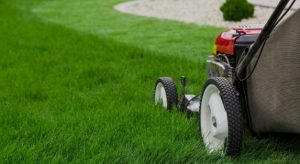
 .
.


